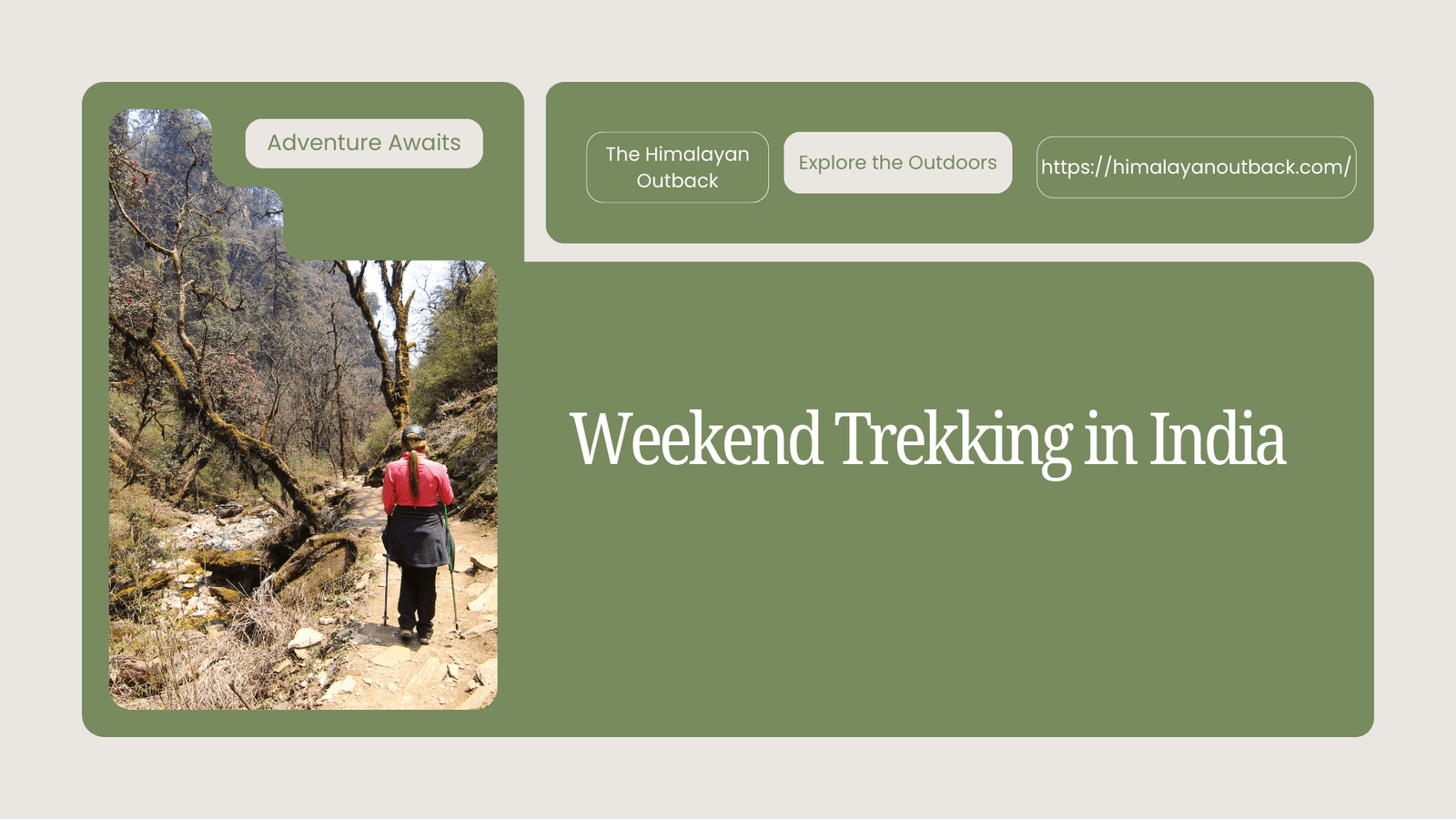Nestled in the lap of the mighty Himalayas, Himachal Pradesh stands as India’s crown jewel for trekking enthusiasts. This northern state offers an extraordinary tapestry of landscapes that transforms every step into an adventure. From snow-capped peaks piercing azure skies to emerald valleys dotted with ancient villages, Himachal trekking delivers experiences that etch themselves permanently into memory.
What makes this region truly special isn’t just its breathtaking scenery—it’s the incredible diversity packed into one state. You can trek through lush apple orchards in the morning and find yourself crossing barren high-altitude passes by evening. Whether you’re a weekend warrior seeking your first mountain experience or a seasoned adventurer craving challenging high-altitude routes, Himachal Pradesh serves up the perfect trail.
This comprehensive guide explores why millions of trekkers consider Himachal Pradesh their ultimate playground, featuring the state’s most spectacular trails and what makes each one unique. Get ready to discover your next mountain adventure.
The Magic Behind Himachal’s Trekking Appeal
Diverse Terrain for Every Skill Level
Himachal Pradesh’s geography reads like a trekker’s wishlist. The state encompasses multiple mountain ranges including the Dhauladhar, Pir Panjal, and parts of the Greater Himalayas. This creates an incredible variety of trekking experiences within relatively short distances.
Beginners can start with gentle trails like Triund or Prashar Lake, where well-marked paths wind through mixed forests of oak and deodar. These routes offer stunning panoramic views without requiring technical climbing skills. Meanwhile, experienced trekkers can tackle challenging routes like Pin Parvati Pass or Bhabha Pass, which demand serious preparation and mountaineering knowledge.
Year-Round Trekking Opportunities
Unlike many mountain regions that close during winter months, Himachal Pradesh offers trekking opportunities throughout the year. Summer months (April to June) provide perfect conditions for high-altitude treks, while monsoon season (July to September) transforms lower elevation trails into lush green paradises. Winter brings snow trekking opportunities for those seeking a completely different mountain experience.
Rich Cultural Encounters
Himachal trekking isn’t just about natural beauty—it’s a journey through living culture. Trails pass through traditional villages where centuries-old customs thrive. You might encounter Gaddi shepherds grazing their flocks on high-altitude meadows, visit ancient Buddhist monasteries perched on clifftops, or share tea with villagers in remote hamlets that seem untouched by time.
Must-Experience Treks in Himachal Pradesh
Triund Trek: The Perfect Introduction
Starting from McLeod Ganj, home to the Dalai Lama, the Triund trek serves as an ideal introduction to Himachal trekking. This 6-kilometer trail winds through beautiful mixed forests, offering spectacular views of the Dhauladhar range and Kangra Valley.
What makes Triund special is its accessibility combined with genuine mountain beauty. The gradual ascent through oak and deodar forests provides excellent acclimatization for beginners, while the summit rewards trekkers with 360-degree mountain vistas. Clear nights reveal countless stars, creating an unforgettable camping experience.
Kheer Ganga Trek: Where Adventure Meets Spirituality
Hidden in the Parvati Valley, the Kheer Ganga trek combines natural hot springs with stunning Himalayan scenery. This 11-kilometer journey begins at Barshaini village and passes through pristine forests and traditional settlements.
The trek’s highlight comes at the end—natural hot springs believed to have medicinal properties. After a day of hiking, soaking in these thermal waters while surrounded by snow-capped peaks creates a truly magical experience. The name “Kheer Ganga” itself comes from the milky appearance of the sacred spring.
Hampta Pass Trek: A Tale of Two Valleys
The Hampta Pass trek showcases Himachal’s incredible diversity by connecting the lush Kullu Valley with the stark beauty of Lahaul. This moderate trek starts among apple orchards and green meadows, then dramatically transitions to an almost lunar landscape.
The journey includes a visit to Chandratal Lake, known as the “Moon Lake” for its crescent shape. Camping beside this turquoise jewel at 14,100 feet, surrounded by towering peaks, ranks among India’s most spectacular high-altitude experiences. The stark contrast between the valleys makes this trek feel like traveling between different worlds.
Prashar Lake Trek: A Floating Mystery
The Prashar Lake trek leads to one of Himachal’s most enigmatic destinations. This sacred lake, dedicated to the sage Prashar, contains a floating island that mysteriously changes position. Surrounded by snow-capped peaks, the lake creates a mirror-like reflection that seems almost otherworldly.
The trek provides stunning views of the Dhauladhar, Pir Panjal, and Kinnaur mountain ranges. Camping beside the lake offers incredible sunrise and sunset views, while the ancient Prashar temple adds spiritual significance to the natural beauty.
Advanced Adventures for Seasoned Trekkers
Pin Parvati Trek: The Ultimate Challenge
Connecting the Parvati and Pin valleys, this high-altitude adventure ranks among India’s most challenging treks. The route passes through the Great Himalayan National Park, offering opportunities to spot rare wildlife including snow leopards and Himalayan blue sheep.
This trek demands serious preparation and experience. River crossings, glacier travel, and extreme weather conditions make it suitable only for accomplished trekkers. However, the rewards include some of the most pristine and remote Himalayan landscapes accessible on foot.
Bhabha Pass Trek: Ancient Monasteries and Alpine Beauty
This challenging trek combines natural splendor with cultural richness. The route passes through ancient Buddhist monasteries including Kungri, Ki, and Tabo, some of which date back over a thousand years.
The trek showcases incredible diversity—from lush apple orchards to turquoise lakes to high-altitude deserts. Stops at Chandratal Lake and views of majestic peaks in both Spiti and Kinnaur valleys make this one of Himachal’s most comprehensive mountain experiences.
Hidden Gems Worth Discovering
Bhrigu Lake Trek: High Altitude Made Accessible
Named after the sage Bhrigu, this trek offers one of the easiest routes to high altitude in the Himalayas. Starting from Gulaba near Manali, the trail leads to an emerald lake at 14,100 feet, surrounded by 360-degree mountain views.
The trek passes through vast alpine meadows where Gaddi shepherds graze their flocks. Views of peaks like Hanuman Tibba, Deo Tibba, and the Seven Sisters create a spectacular mountain amphitheater. The relatively easy access to such high altitude makes this trek perfect for those wanting to experience the high Himalayas without technical climbing.
Chanderkhani Pass Trek: The Hidden Himalayan Gem
Starting from the picturesque town of Naggar, this trek crosses beautiful valleys with traditional Himachali architecture. The route offers stunning views of both Kullu and Parvati valleys while passing close to the legendary village of Malana.
Malana village, with its unique culture and claims to ancient Aryan ancestry, adds fascinating cultural dimension to the natural beauty. The gradual ascent through forests and meadows makes this trek accessible to intermediate trekkers while offering genuinely spectacular mountain scenery.
Essential Tips for Himachal Trekking Success
Physical Preparation and Acclimatization
Himachal’s varying altitudes demand proper preparation. Even moderate treks reach elevations where altitude sickness becomes a concern. Start training at least 6-8 weeks before your trek, focusing on cardiovascular fitness and leg strength.
Acclimatization becomes crucial for high-altitude treks. Plan rest days and gradual ascent schedules. Listen to your body and don’t hesitate to descend if altitude sickness symptoms appear.
Best Seasons for Different Experiences
Summer months (April to June) offer the best conditions for high-altitude treks, with clear skies and moderate temperatures. Post-monsoon season (September to November) provides excellent visibility and stable weather. Winter treks require specialized gear and experience but offer unique snow-covered landscapes.
Avoid trekking during peak monsoon (July to August) except for lower elevation trails where the rain creates lush green scenery.
Gear and Safety Considerations
Himalayan weather changes rapidly, so layered clothing systems are essential. Quality trekking boots, warm sleeping gear, and rain protection make the difference between enjoyable and miserable experiences.
Consider hiring experienced local guides, especially for challenging routes. They provide invaluable knowledge about weather patterns, route conditions, and safety procedures.
Sustainable Trekking in Himachal Pradesh
Leave No Trace Principles
Himachal’s pristine beauty depends on responsible trekking practices. Pack out all waste, stick to established trails, and camp only in designated areas. Use biodegradable soap and avoid washing directly in streams or lakes.
Support local communities by hiring local guides and porters, staying in village homestays, and purchasing supplies from local vendors. This ensures that tourism benefits the people who call these mountains home.
Respecting Local Culture and Environment
Many trekking areas hold religious significance for local communities. Respect sacred sites, follow photography guidelines, and dress appropriately. Learn basic local customs and greetings to enhance your cultural interactions.
Your Himachal Trekking Adventure Awaits
Himachal Pradesh’s incredible diversity makes it truly India’s ultimate trekking playground. From gentle forest walks to challenging high-altitude expeditions, from sacred lakes to ancient monasteries, every trail tells a different story. The state offers the perfect combination of natural beauty, cultural richness, and adventure that creates lifelong memories.
Whether you’re planning your first Himalayan adventure or your fiftieth, Himachal trekking delivers experiences that transform perspectives and ignite lifelong passions for the mountains. The question isn’t whether you should trek in Himachal Pradesh—it’s which incredible adventure you’ll choose first.
Start planning your Himachal trekking adventure today. Research routes that match your skill level, begin physical preparation, and get ready to discover why countless trekkers consider these mountains their second home. The Himalayas are calling—will you answer?






